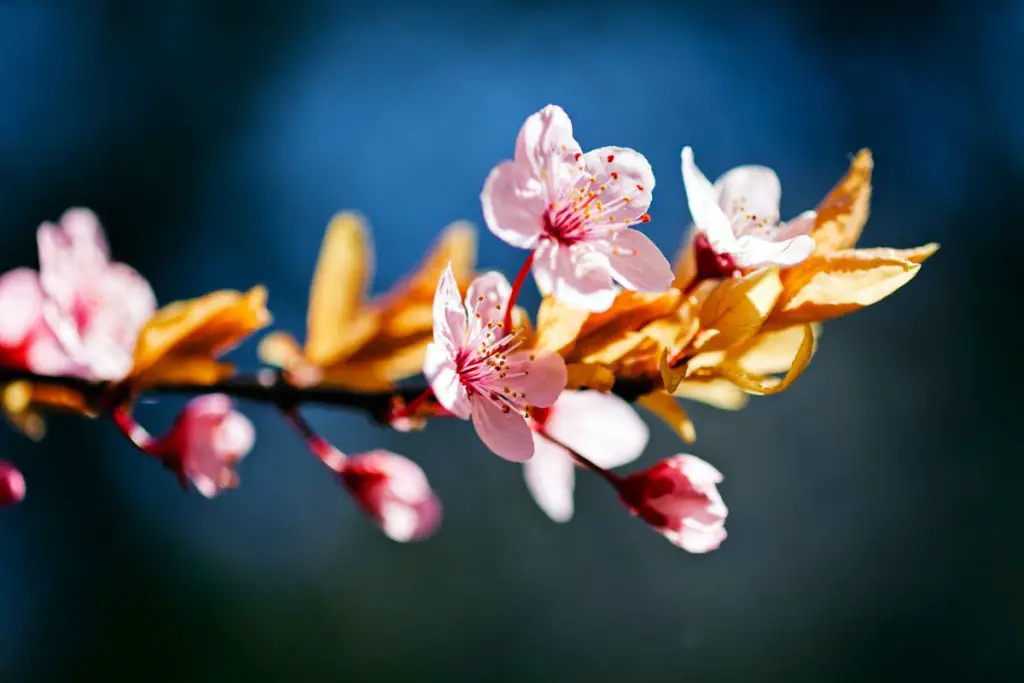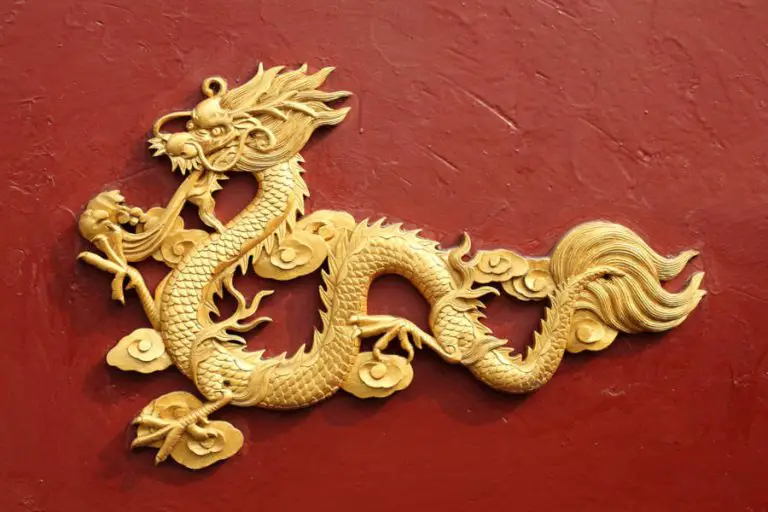The plum blossom (梅花) is the flower that immediately makes you think of Asian culture. Plum blossom is one of the most popular flowers among Chinese people, and it is widely available and cultivated across the country. The plum blossom is remarkable enough to be named their national flower due to its lengthy history and significance.
While the plant’s actual name is plum blossom, Chinese people call it “mei.” This literally translates to “flowering plum” or “winter plum.”
Plum blossoms are gentle, delicate flowers with five petals that are regarded as honorable in Asian culture. It’s also one of the four auspicious flowers associated with the four seasons in Asian culture. Plum blossom is a symbol of winter, while peony, lotus, and chrysanthemum are those of spring, summer, and fall, respectively.
In addition, plum flowers are one of the “Three Friends of Winter” (岁寒三友), which refers to three hardy winter plants: pine, bamboo, and plum blossoms, as well as the “Four Noble Ones” (四君子), which are orchids, plum blossoms, chrysanthemums, and bamboo, which were thought to represent values like purity, modesty, and honesty.
People in Mainland China love these common plants for their humble beauty and ability to survive the hard winters. Plum blossoms, in particular, are idealized as symbols of endurance, humility, and inner beauty. The flower is important in Chinese culture, appearing in a variety of poetry, cultural performances, and paintings.
The plum blossom is regarded as a symbol of good fortune and success in Feng Shui, and is said to bring positive energy and a sense of rejuvenation to the house or workplace. Continue reading to discover more about this!
On July 21, 1964, Chinese officials declared plum blossoms the country’s national flower because of their huge popularity for both their beauty and many benefits. The peony, another popular flower across the country, was supplanted by this regulation on the flower pedestal. The Chinese national flower is one of the most famous blooms in China, and people call it “the queen of flowers” for a reason.
Continue reading to learn more about the history of plum blossom in China, its cultural significance, its symbolism, and how to use it as a symbol in feng shui.
Plum Blossom in Chinese Culture
Plum blossoms have profound cultural significance in China and other East Asian nations.
The tree’s beautiful pink blossoms show that beauty can endure in harsh situations by blooming bravely and vibrantly in the face of winter frost.
Because the Plum tree blooms between seasons, it is also seen as a spring symbol, offering warmth, change, and the promise of fruitfulness. Perhaps it is for this reason that immortals in Chinese mythology ate plums to increase their power and vitality throughout the years.
Plum trees can survive in a variety of environments, from inner-city parks to lonely and cold mountain peaks, softly emanating an ethereal grace. According to ancient Chinese legends, the smell of plum blossoms “lights the world from the bitterness and coldness of winter,” implying that happiness and beauty may sprout even at the darkest periods of our lives.
Zhu Xi, a Confucian scholar, went much further. He bestowed four virtues on the plum bloom alone. According to Zhu Xi, the attributes of this flower are as follows: huge potential (in the bud), wealth (in the blossom), harmony (in the fruit), and justice (in the mature plant). According to the Chinese Book of Change, these qualities represent the idea of heaven.
Plum blossom trees are regarded as an aesthetic plant that may be utilized for more than just beautifying the landscape. The fruit of the blooming plum was a very important part of the Ming diet. For its health benefits, its fruits continue to be cultivated today.
The fruits are really adaptable in terms of what you can do with them. They can be candied, dried, honeyed, or pickled. Furthermore, they may be used to produce a sour plum sauce, which, when diluted with water, becomes a summer beverage. Plums may also be utilized to make liqueur when it comes to drinks.
The plum blossom tree is not just for decoration, and the fact that its fruit can be used to make so many various sorts of food made it useful to the Chinese. Even now, its blossoms are a popular tourist attraction that brings in a lot of money for China.
Plum blossoms have also been used as a powerful protection against bad spirits since ancient times. They may be found guarding the northeast corner of many gardens and temples. One of the training areas for the Wing Chun style of martial arts was named the “Hall of Eternal Springtime,” or the Wing Chun Kwoon (詠春館), and was surrounded by plum trees in the famed southern Shaolin Temple (少林寺, Shàolínsì).
Plum Blossom Symbolism in China
Plum blossoms, also known as Mei Hua flowers, are symbolic of courage, persistence, and overcoming misfortune in Chinese culture. Because it blossoms between two seasons, the plum tree is considered a symbol of life’s transitional stages.
Since ancient times, there has been a mystery and symbolism surrounding Plum Blossom. The end of winter is when the plum flowers emerge, earning them the title of “herald of spring.” Because they are the first flower of the year, they also symbolize purity and regeneration.
As previously stated, the plum blossom is one of the three “friends of winter” in Chinese tradition, along with bamboo and pine. As you may expect, all of these winter friends were picked for their toughness. It is one of the few plants that can blossom throughout the severe winter months, and it embodies the qualities of perseverance, tenacity, and devotion in the face of adversity.
The plum blossom signifies the ideals and virtues in Confucianism, while the five petals represent the ancient Five Blessings (五福):
- Long life and vitality into old age (寿)
- Wealth and financial security (富)
- Radiant health (康宁)
- Appreciation of virtue (修好德)
- Peaceful natural death (考终命)
This is one of the key reasons why the Chinese thought a plum blossom plant or artwork to be a good omen during Chinese New Year. These benefits will also be extended to the visitor who comes. Because the number 5 is considered sacred in Chinese culture, the plum blossom symbolizes fortune and success. The pink and red variants are the most popular since red is associated with good fortune.
The plum blossom represents the fleeting aspect of life in Zen. Because the flower only blooms completely for a brief period of time, it serves as a reminder to embrace the present moment and live the best life possible.
The Chinese National Flower also represents purity, faith, power, and courage. In the hopeless winter environment, bright and cheery plum blossoms surprisingly grow, giving the Chinese people hope. It demonstrates the popular belief that experience hardens personalities, cultivating inner strength, faith, and an unbending spirit.
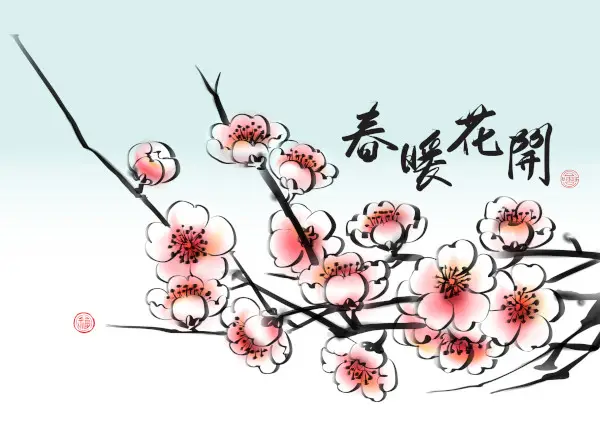
The plum blossom, as the National Flower, represents:
Three buds and five petals represent the Three Principles of the People and the five branches of government as outlined in the Constitution.
The plum blossom survives the cold winter (it blooms more at lower temperatures) and signifies the faithful, the steadfast, and the holy; it reflects the national spirit of the Republic of China citizens.
According to Confucian philosophy, which served as imperial China’s guiding philosophy for two millennia until the Qing Dynasty was overthrown and the Republic of China was founded in 1912, the flower’s five petals stand for:
- Five Races Under One Union
- Five Cardinal Relationships (Wǔlún)
- Five Constants (Wǔcháng), and
- Five Ethics (Wǔjiào).
The branches (枝橫), shadow (影斜), flexibility (曳疏), and cold resistance (傲霜) of the plum blossom also reflect the four kinds of noble attributes stated in the I Ching (Book of Changes), “originating and penetrating, advantageous and firm.”
Furthermore:
- Plum blooms, like the peony and magnolia, were commonly connected with natural beauty in ancient China.
- When depicted with peach blossoms, it symbolizes a devoted friendship.
- Narcissus alone with plum blooms represents the passage of time from winter to spring.
- When depicted with a sparrow, it means that good news is on the way.
- According to Chinese mythology, the plum blossom represents those with strong personalities who are not afraid of obstacles.
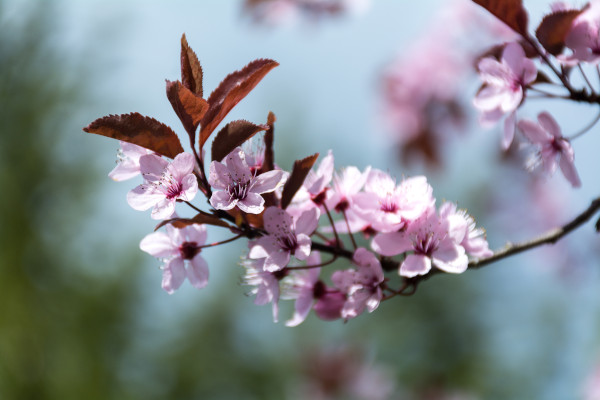
History and Origin of Plum Blossom in China
Plum blossom, which has been cultivated in China for thousands of years, has historical significance for the Chinese people. Originating around the Yangtze River in southwest China, the farmers carried the durable plant to cooler climates. They later took it to Korea and Japan, where it became one of the most significant flowers in Asian culture.
Plum Blossom has a long history in China. For almost 3,000 years, plum fruit has been utilized as a primary dietary component, and Plum blossoms have a more than 2,000-year history of usage in Chinese culture as garden decorations.
During the Tang era, Chinese nobles and priests were amazed by the beauty of these trees. Because of this, the plum blossom has been an important subject for poems and paintings.
Plum Blossom’s popularity peaked during the Song Dynasty when numerous poets wrote about the beauty, qualities, and significance of Plum Blossom in their daily lives.
However, it did not become popular until the princess and her court began decorating with plum blossoms in the 5th century.
During the Qing Dynasty, the anti-Manchu movement embraced the plum blossom as a revolutionary symbol of resistance; previously, the peony had held the preeminent position as the Chinese national flower.
The five petals represent the five branches of government as well as the five Chinese races ruled by a single union.
Despite being under Manchu government oppression, the Chinese nation and people aspired to expand and prosper, just like the plum flower. In the trials, the spirit is tempered and the inner strength is strengthened.
Contemporary Use of the Symbol
As one of the Republic of China’s national symbols, the plum blossom graphic has been used on many Chinese government logos.
This includes the following:
- The emblem of the President’s Office
- The Olympic flag of Chinese Taipei (also known as the “Plum Blossom Banner”)
- Senior officers’ rank insignia in the Chinese Armed Forces
- The front side of the NT$0.5 coin
- Back of a NT$10 coin
- Watermark on the new Taiwan dollars
- China Airlines Logo


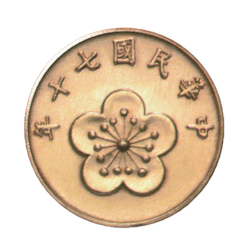
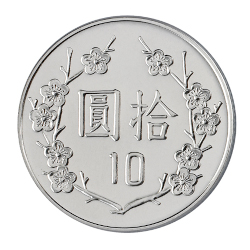
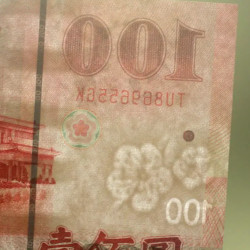
Chinese Legends for Plum Blossoms
Different nations and traditions have various myths and tales related to the plum blossom; however, in this article, we mainly discuss Chinese culture. Here are some of the most well-known legends:
According to the tale, a student was on the verge of quitting his studies because the winter’s severe weather had made him so depressed. However, he came across a plum blossom tree that was in full bloom and took inspiration from the tree’s toughness. Like the plum blossom, he understood that he too could endure and reach his goals despite adverse circumstances.
According to another legend, the plum blossom bloom arose from the tears of an exiled fairy. The fairy grieved so hard that her tears produced a lovely flower. The plum blossom is also a symbol of the goddess of beauty and love, and some think it may ward off evil spirits and negative energies.
Additionally, there is a Chinese saying that claims that when plum blossoms are in bloom, the cruel winter has not yet ended, and when they are fully open and have fallen, spring has begun.
The Goddess of Plum Blossom
In Chinese mythology, Princess Shouyang is recognized as the goddess of plum blossoms. According to folklore, Princess Shouyang popularized plum blossom-shaped decorations during Nan’s Song Period. All ladies rapidly began to imitate her, and this practice became known as Plum Blossom Makeup.
As a result, Princess Shouyang came to be known as the Goddess of Plum Blossom, and January 7th of the lunar calendar was designated as Plum Blossom Day.
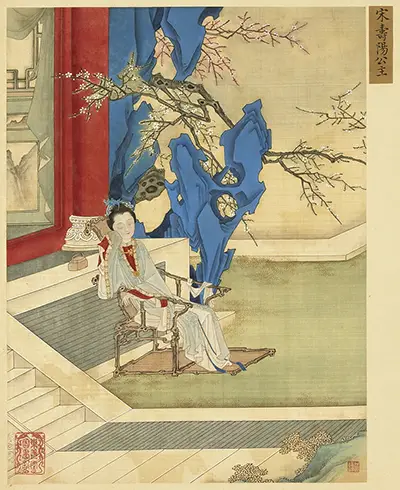
Plum Blossom in Chinese Art and Literature
The plum blossom, China’s most adored flower, is prominent in traditional Chinese art and literature. The traditional Chinese character for plum blossom represents the qualities of power and courage. For centuries, this flower has been the subject of admiration and portrayal in all forms of art, from painting to poetry.
During the Song Dynasty, Lu You (陸游) devoted a considerable portion of his poetry to this flower, which he admired, and Su Dongpo (苏东坡), one of China’s best poets, stated in one of his verses: “The beauty of the plum goes beyond the bitter taste of the fruit.”
There is also the common Chinese saying “Mei Qi He Zi” (梅妻鹤子), which translates to “plum wife and crane sons.” This is frequently represented in paintings and other works of art. It is even mentioned in poems from time to time.
This saying comes from the narrative of Lin Bu (967–1028), who lived in isolation on a lonely mountain outside Hangzhou’s West Lake. He planted plum flowers all over the hillside, and he raised a group of cranes. He never had a wife. He said that plums were his wife and that cranes were his sons: “Plum Wife and Crane Sons”.
Plum blossoms are frequently shown in various stages of bloom in Chinese ink paintings, reflecting the never-ending cycle of life and death. They have even inspired their own genre of art and poetry.
An artwork that can occasionally be found in Chinese households depicts a magpie standing on the branch of a plum blossom, expressing the phrase “Xi Shang Mei Shao” (喜上眉梢), which translates as “happiness up to one’s eyebrows.”
This is a play on the words Méi (梅), which means plum in Mandarin, and Méi (眉), which means eyebrow.
This is not to be mistaken with another image of a magpie and a plum, with the former chirping cheerfully on the latter’s branch.
The painting’s meaning is “Xi Bao Chun Xian” (喜報春先), which represents the “arrival of early spring” and fresh joyous beginnings.
The flower was so popular that there were coins in the shape of a plum blossom in ancient times.
Today, the plum blossom may be seen in stage shows for ancient Chinese dances, which use movement and music to honor the flower’s beauty, purity, and perseverance. Furthermore, the flower is frequently seen on traditional clothes and jewelry.
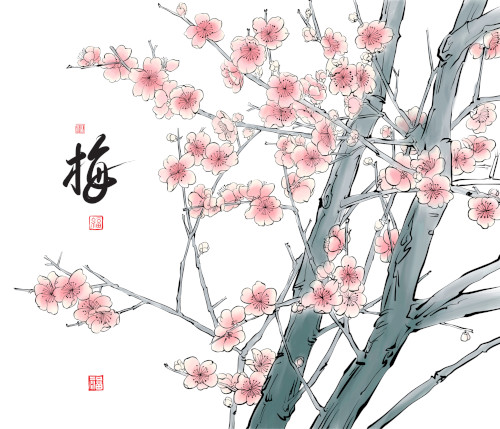
Plum Blossom in Traditional Chinese Medicine
The therapeutic benefits of the plum blossom flower are also highly regarded. The flower is used to cure a variety of diseases in traditional Chinese medicine, including coughs, colds, and inflammation. Furthermore, plum blossom is commonly utilized in teas and other therapies due to its healing properties. It is a powerful antioxidant that can help lower cholesterol and enhance the immune system.
- The Chinese plum is also high in soluble fiber, which aids digestion, promotes appetite, and reduces constipation.
- Acupuncture with plum blossom needles is reported to help with hair loss in a variety of ways. It may aid in the cleaning of meridians, the improvement of qi and blood, the promotion of blood circulation, and the stimulation of hair follicles.
- Plum blossoms are also associated with mental, emotional, and spiritual well-being. When turned into a tea, red plum blossom flower petals may have soothing properties that might aid with anxiety, stress, and other issues.
- Plum blossoms are also used in the preparation of liqueurs, as well as various foods and beverages, in several Asian countries, including China and Japan. In Chinese medicine, Mei Hua, or plum blossoms, are known for regulating the spleen and stomach, relaxing the liver Qi, eliminating phlegm, and cleansing the body.
How to Use Plum Blossom Symbol in Feng Shui
The plum blossom is regarded as an auspicious symbol in Feng Shui, capable of attracting a variety of beneficial energies into your life. It is associated with wealth, success, good health, good relationships, and fruitfulness since plum trees produce fruit.
Their five petals also reflect balanced energy since they represent the five elements of nature. Fire, earth, metal, water, and wood are the five elements. They represent the different kinds of energy that make up the world around us.
Plum blossoms are also connected with winter since they bloom throughout the winter in Asia. As a result, they are widely used as auspicious symbols in houses throughout the winter to attract positive energies of optimism, resilience, and prosperity.
Additionally, the plum blossom is related to the Wood element and is said to provide positive energy and growth to the house or workplace. The wood element stands for growth, new starts, and positive change, and the plum blossom is seen as a symbol of these values.
According to Feng Shui principles, there are various ways to incorporate the plum blossom into your house to provide positive vibes and good luck.
Want to learn more about Feng Shui? Take a look at these Courses and Books – Aff.link
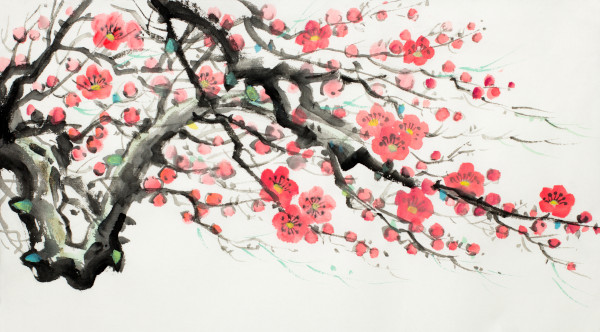
Plum Blossom Feng Shui Placement
Here are some ideas for using Plum Blossom in your home or workplace.
- The east sector is optimal for Plum Blossom placement because this area is connected to the wood element and also symbolizes spring.
- The north is another option because it has water energy, which could help the plant’s growth.
- Hanging plum blossom paintings on the walls will give your home a sense of vibrancy and regeneration. Pictures and paintings should be placed in visible locations, such as the living room, so that everyone may enjoy them.
- Your meals may be made more elegant and prosperous by using plates, placemats, or tablecloths with plum blossom themes.
- Having a plum blossom plant in your home can give you energy for growth and vigor. Put the plant in an area of your home where you want to improve the flow of energy. The best place is in the east.
- For people looking for a second marriage after a divorce, they can improve their romance luck if they place plum blossoms in their bedrooms.
- Lastly, if you buy plum blossoms just for the Chinese New Year celebrations, be sure to throw them away in a respectful and proper way.
Remember that the purpose of Feng Shui is to produce harmony and good energy flow in your house, so while incorporating the plum blossom, keep the overall energy and balance of your space in mind. By adding plum blossoms to your home in a natural way, you can bring happiness, money, and positive change into your life.
🍀 Our “Feng Shui Master” app is your trusted companion, offering a useful guide to implementing Feng Shui principles. Try it now!
Plum Blossom as a Gift
Because of their wide range of happy connotations, plum blossoms can be given as presents for any positive or festive event. They are a wonderful way to wish a friend, loved one, or coworker prosperity and success in a new venture or to convey a message of optimism and bravery. They may also be used to acknowledge someone’s fortitude and capacity to persist in the face of hardship, just as the plum blossom overcomes the winter cold to bloom.
When and Where is the Best Time and Location to See Plum Blossoms?
The best time to see Chinese plum flowers is from late February until the end of March. The Plum Garden (梅园) in Wuxi, a lake city near Suzhou, is one of the best places in China for seeing winter plums.
There are many plum blossom festivals in Shanghai, with the one at Century Park being the easiest to reach by public transportation.
Plum blossom gardens from towns surrounding Shanghai collaborate to exhibit at this massive park. Local gardeners have been cultivating some plum tree species for centuries to improve their aesthetic appeal.
If you are ready to go a little further south, you can see the most plum blossoms in Shanghai Haiwan National Forest Park, which has over 47,000 plum trees.
Medium-sized to small-scale plum blossom gardens may also be found at Gucun Park, Shanghai Botanical Garden, Jing’an Sculpture Park, and some of the oldest in Shanghai, including Shanghai Da Guan Yuan and Guyi Garden.
🧧 Use our free “ChinaGoGuide” app. Your personal guide to your journey to China. Try it now!
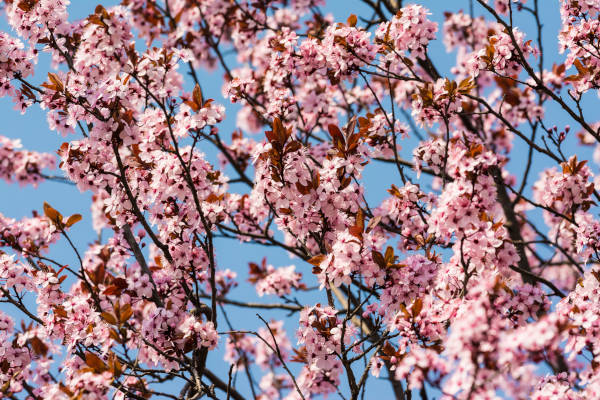
More About Plum Blossom
- The plum blossom is considered to symbolize the human being because of its five petals, which represent the four limbs and the head of a person.
- Over time, the form of the Chinese plum blossom with its five petals came to represent the arts of the Southern Shaolin Temple and, in particular, the “Fist of the Eternal Spring”, or Wing Chun.
- Within Chinese Martial Art, the Mui Fa, or plum blossom, indicates a movement pattern unique to Choy Li Fut’s “King Mui branch” ( 京梅).
- Plum blossom tattoos are popular among tattoo enthusiasts. It stands for a person’s determination to succeed in overcoming obstacles and suffering in life. Furthermore, given that they are historically believed to provide protection from misfortune and evil, they may work as a lucky charm.
- There is also a divination method called the “Mei Hua Yi Shu” (梅花易數) in the I-Ching, the Book of Changes. However, it is unusual among feng shui masters. This is due to the fact that it only makes up a minor portion of the I-Ching.
Conclusion
Finally, it should be noted that the plum blossom, known in Chinese as Mei Hua, is admired for its strength, aesthetic appeal, and symbolic significance. The plum blossom, as one of the four auspicious flowers representing the four seasons, signifies winter and is seen as a symbol of resilience, humility, and inner beauty. Its significance goes beyond its decorative appeal, as it appears in Chinese literature, art, and even Feng Shui practices.
Interestingly, the five petals of the plum blossom represent the Five Blessings, which reflect long life, riches, radiant health, appreciation of virtue, and peaceful natural death. It’s no surprise that the plum blossom was named China’s national flower in 1964, replacing the peony, and is lovingly known as “the queen of flowers.”
Furthermore, the plum blossom has therapeutic characteristics in traditional Chinese medicine, which are used to treat a variety of maladies, and its usage in Feng Shui provides wealth, good health, and positive energy to residences and workplaces. By combining with the Wood element, the plum blossom represents growth, new starts, and positive change.
In art, poetry, and cultural references, the plum flower has always been a symbol of strength and beauty. Its rich symbolism inspires us to bravely accept life’s transformations, cherish the present, and find hope and happiness even in the darkest of times.
The plum blossom is a deep symbol of endurance, courage, and wealth in Chinese culture, reminding us that, like this delicate flower, we can bloom amid adversity and blossom gracefully in all seasons of life.
Want to learn more about Feng Shui? Take a look at these Courses and Books – Aff.link
Stay in Touch
 Join our newsletter by using the forms on this website or click here!
Join our newsletter by using the forms on this website or click here! Follow us on Google News
Follow us on Google News Follow us on Facebook
Follow us on Facebook
Featured Image from Depositphotos

